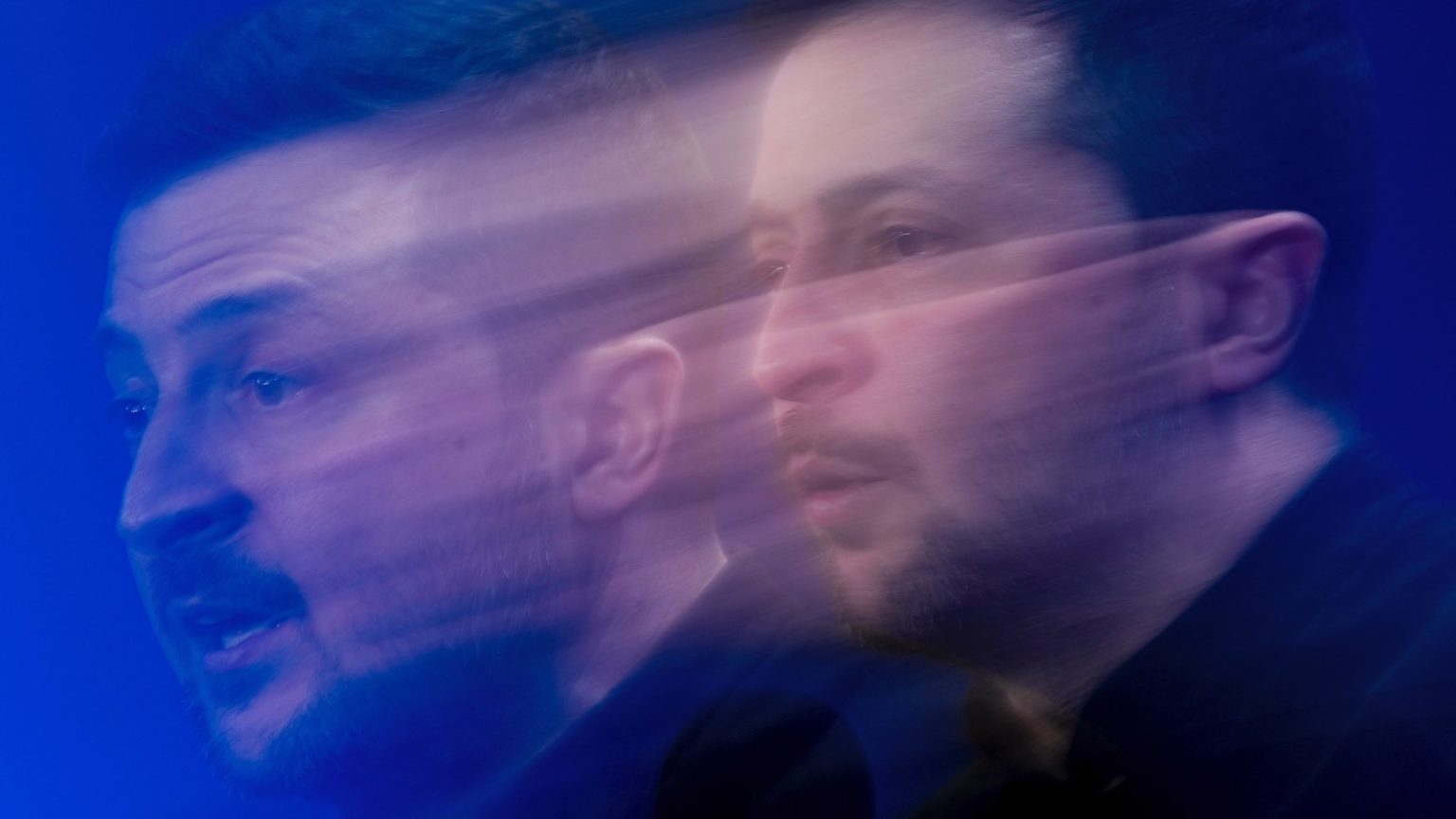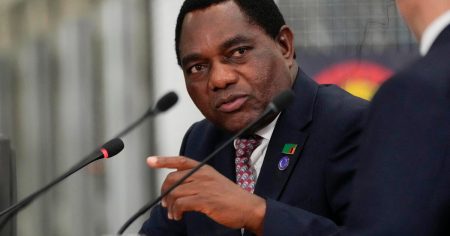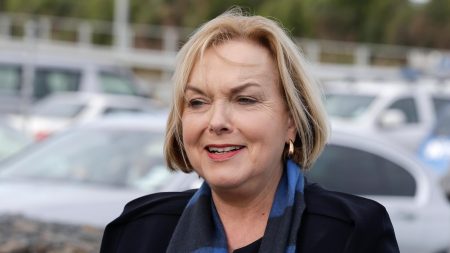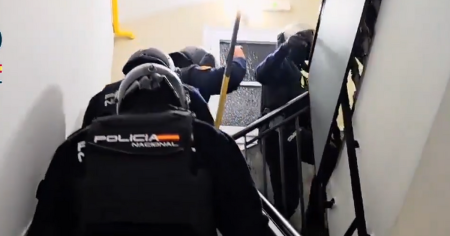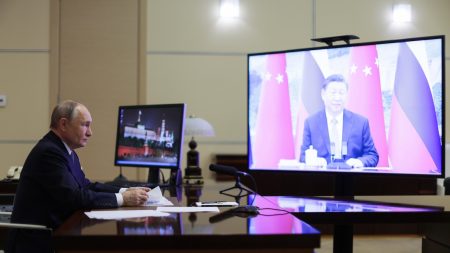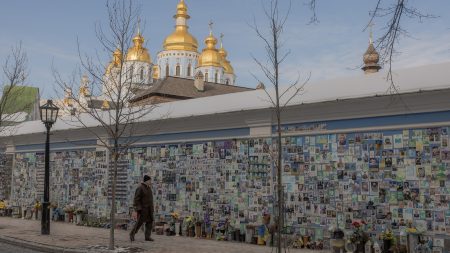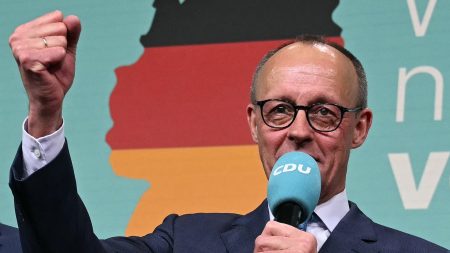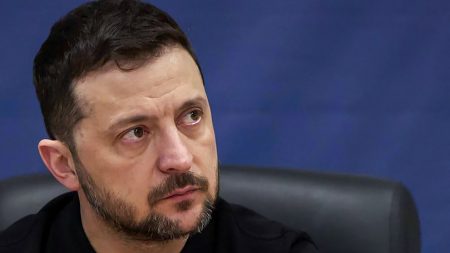Diplomatic Efforts and the Elusive Path to Peace
The quest for peace in the conflict between Ukraine and Russia has recently seen a glimmer of hope, yet it remains shrouded in uncertainty. A significant meeting in Saudi Arabia brought together top diplomats from the United States and Russia, hinting at a potential end to the war. However, the absence of Ukrainian representatives at this gathering underscored the challenges in reaching a resolution that aligns with Ukraine’s interests. Secretary of State Marco Rubio and Russian Foreign Minister Sergey Lavrov emphasized the need to end the war "as soon as possible," but the lack of Ukrainian involvement raised concerns about whether any agreement would truly serve Ukraine’s needs. President Volodymyr Zelenskyy remained steadfast, insisting on robust security guarantees to prevent future aggression, a stance that reflects Ukraine’s deep-seated mistrust of Russian intentions.
A Shift in U.S. Policy and Its Impact on Ukraine
The U.S. political landscape shifted dramatically with President Trump’s election, bringing about a change in approach towards Ukraine. Trump’s administration suggested that Ukraine might need to make territorial concessions, aligning with narratives often promoted by Russia. This stance caused apprehension in Kyiv, as previous U.S. aid, while crucial, was perceived as insufficient to secure a decisive victory. The administration’s push for access to Ukraine’s mineral resources added another layer of tension, with Zelenskyy firmly resisting what he saw as an attempt to undermine Ukraine’s sovereignty. The debate over the exact figure of U.S. aid—whether it was $100 billion or $500 billion—highlighted the complexities and potential misunderstandings in the U.S.-Ukraine relationship.
Escalating Violence and Expanding Conflict
The conflict escalated significantly in its third year, with both sides engaging in intensified military actions. Ukraine launched a surprise counteroffensive into Russian territory, targeting the Kursk region, a bold move that caught Moscow off guard. Russia retaliated with relentless missile strikes across Ukraine, causing widespread civilian casualties and infrastructure destruction. The involvement of North Korea, sending thousands of troops to support Russia, marked a concerning expansion of the conflict. This development was seen by some as a sign of President Putin’s weakening position, as he sought external assistance to bolster his forces. The U.S. responded by approving the supply of long-range missiles to Ukraine, enabling strikes deep within Russia—a significant shift in strategy that aimed to strengthen Ukraine’s negotiating position.
Economic Pressures and the Cost of War
The economic dimensions of the war have placed immense pressure on both Ukraine and Russia. The U.S. imposed stringent sanctions on Russia, targeting its economy and leadership, while Ukraine struggled to sustain its resistance amidst devastating losses. The financial aid from the U.S. and Europe was crucial, yet debates over the exact figures and terms of this support continued to simmer. Zelenskyy clarified that the aid was provided as grants, not loans, emphasizing Ukraine’s determination to avoid indebtedness. Meanwhile, the Kiel Institute’s report detailed the extensive U.S. contributions, with a significant portion allocated to military equipment. These economic dynamics underscored the multifaceted nature of the conflict, where financial and military aid played roles as significant as diplomacy.
The Role of Leadership: Three Key Figures
The conflict’s trajectory is profoundly influenced by the resolve of three leaders: Volodymyr Zelenskyy, Vladimir Putin, and Donald Trump. Zelenskyy’s unwavering commitment to Ukraine’s sovereignty and security has been a defining feature of his leadership, as he navigates the intricate geopolitical landscape. Putin, facing increasing internal and external pressures, continues to pursue his objectives with unrelenting determination. Trump’s return to power in the U.S. introduced a new dynamic, with his administration advocating for a peace deal that some fear may compromise Ukraine’s interests. The interplay of these leaders’ strategies and ideologies has shaped the conflict’s evolving narrative, making their wills central to the potential outcomes.
The Human Toll and the Uncertain Future
As the anniversary of the invasion approached, the human cost of the war became increasingly apparent. Ukraine reported over 45,000 deaths, with many more injured, while Russian casualties remained shrouded in secrecy. The relentless violence, including strikes on civilian targets, underscored the dire humanitarian crisis. Despite Ukraine’s military gains, including the surprise offensive into Kursk, the path to peace remained elusive. The U.S.-Russia meeting in Saudi Arabia, devoid of Ukrainian representation, raised questions about whether the diplomatic efforts truly prioritized Ukraine’s needs. As the conflict drags on, the resilience of the Ukrainian people and the international community’s commitment to their cause remain crucial in the face of an uncertain and perilous future. The war continues to be a stark reminder of the devastating impact of geopolitical tensions on ordinary lives.





